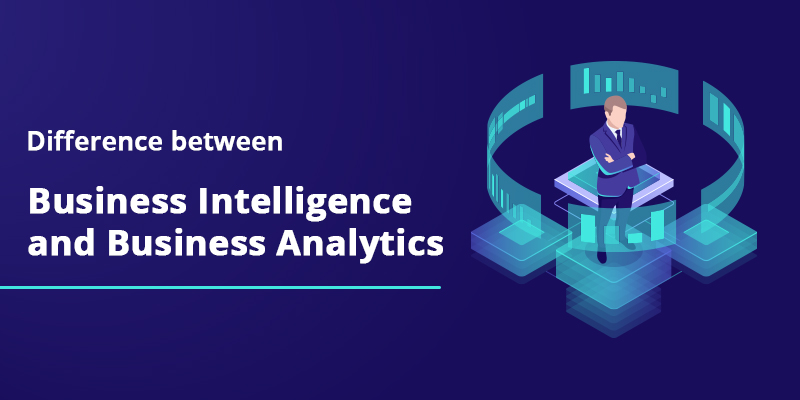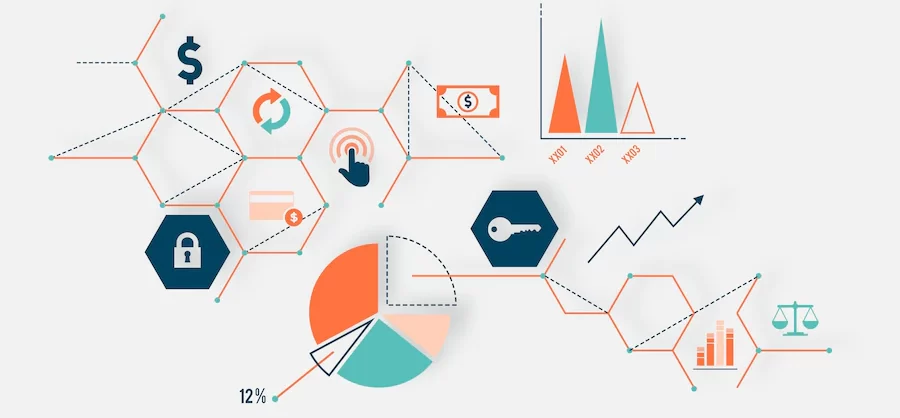Difference between Business Intelligence and Business Analytics
With the rapid growth of data within any company’s database, it becomes crucial for businesses to analyze that data and gain valuable insights quickly. For this purpose, the knowledge of correct tools and techniques and having professionals with domain knowledge are the keys. Becoming such a professional requires a systematic approach and the proper guidance, so enrolling in a reputed business analyst course can be a great approach.
Although the phrases business intelligence (BI) and business analytics (BA) are sometimes used interchangeably, there are some significant distinctions between the two. Although they approach it differently, BI and BA both use data to assist organizations in making better decisions. In this article, we will learn about them both and try to note the major differences between the two.
What is Business Intelligence?
Business intelligence is traditionally seen as using data to support ongoing operational management. When leaders want to gather and save data about current activities, maximize workflow, provide insightful reports, and accomplish current company objectives, they utilize business intelligence tools and specialists.
Software programs and other systems might be considered business intelligence tools. Some experts would also contend that business analytics’ more prescriptive and statistical tools are also included in the category of business intelligence tools.
In general, business intelligence assists leaders in negotiating organizational and sector-specific challenges. It ensures that firms retain a laser-like focus on their core aim to attain their goals effectively.
What is Business Analytics?
The process of transforming data into insights for better corporation choices is known as business analytics. Some methods used to extract insights from data include data management, data mining, data visualization, forecasting simulation, predictive modeling, and optimization. Nonetheless, while business analytics relies largely on statistical, economic, and operational research, the final result is the creation of data visualizations to explain your results and affect business choices.
Business intelligence, for example, may inform business executives what their existing customers look like, whereas business analytics may tell them what their prospective consumers are doing. Some professionals use the term business analytics to define a set of prediction techniques employed in business intelligence.
Many functions use business analytics tools, such as correlational analysis, forecasting analysis, text mining, image analytics, etc. The need for business analytics training has grown due to many of these tools, which force businesses to employ or contract data scientists.
Difference between Business Intelligence(BI) and Business Analytics(BA)
Let’s try to differentiate BI and BA with the help of a table:
| BI | Business Analytics |
| Business intelligence examines both current and historical data to determine what occurred. | Business analytics examines historical data to forecast the future. It is related to long-term operations. |
| By providing particular query responses and critical metric views, BI helps in decision-making. | Business analytics is a broad field. As you proceed, you may delve deeper and ask increasingly specific questions to gain the needed understanding. The goal of business analytics is often improved and become ready for change. |
| BI is required to execute everyday operations by tracking current performance. | By concentrating on future planning, business analytics aids organizations’ whole operations and productivity. |
| With tables and reports containing information on business performance, business intelligence is descriptive. | Business analytics is complicated since it combines diagnostic, predictive, and prescriptive analytics. |
| Applications of this technology include reporting and visual insight into performance. | Its uses include predicting market trends and corporate performance through statistical data analysis and modeling. |
Key Differences between Business Intelligence and Business Analytics
BI and BA are often misunderstood as one, but that’s not the case; let’s try to understand their differences.
Definitions –
Business intelligence (BI) is the process of acquiring and evaluating data to make better business choices. People can utilize BI at various organizational levels, including managers, executives, and even individual employees.
Business analytics is a type of business intelligence that uses statistical analytical techniques to learn more about how consumers utilize products or services. Because of this, business analytics specialists often hold postgraduate degrees in mathematics or statistics as opposed to BI specialists.
To make more informed judgments regarding the future course of your organization, business intelligence focuses on gathering and analyzing data from many sources to spot trends and patterns. Business analysts conduct job activities, including producing reports or managing projects using BI technologies like dashboards, reports, scorecards, and visualizations.
Ease of Operations –
Thanks to BI solutions, businesses can easily store, retrieve, and analyze data. People with limited technical experience may utilize BI software to get all relevant information without writing code or creating extensive reports, which would otherwise be challenging.
BA, on the other hand, is more technical and often necessitates knowledge of statistics as well as computer languages such as Python or R. Business analytics may be a time—and resource-intensive process since it includes processing large volumes of data from numerous sources.
Analysts vs Managers –
Managers use data to make choices, whereas analysts use data to provide answers. This is one of the most significant distinctions between BI and BA.
Typically, managers are in charge of a company’s marketing, sales, and production, in addition to its operations and finances. They make judgments using data from throughout the firm. Since they must act swiftly, they utilize dashboards to monitor key performance indicators (KPIs) pertaining to their areas of responsibility. Managers must also interpret the significance of those KPIs to make wise decisions on how to proceed.
Analysts primarily provide management with reports or other stakeholders. They could also provide research or analysis for a customer or business as part of their job duties. This might involve gathering information from a database or site using automated techniques like scraping tools, analyzing it, and presenting the results like charts or graphs.



















